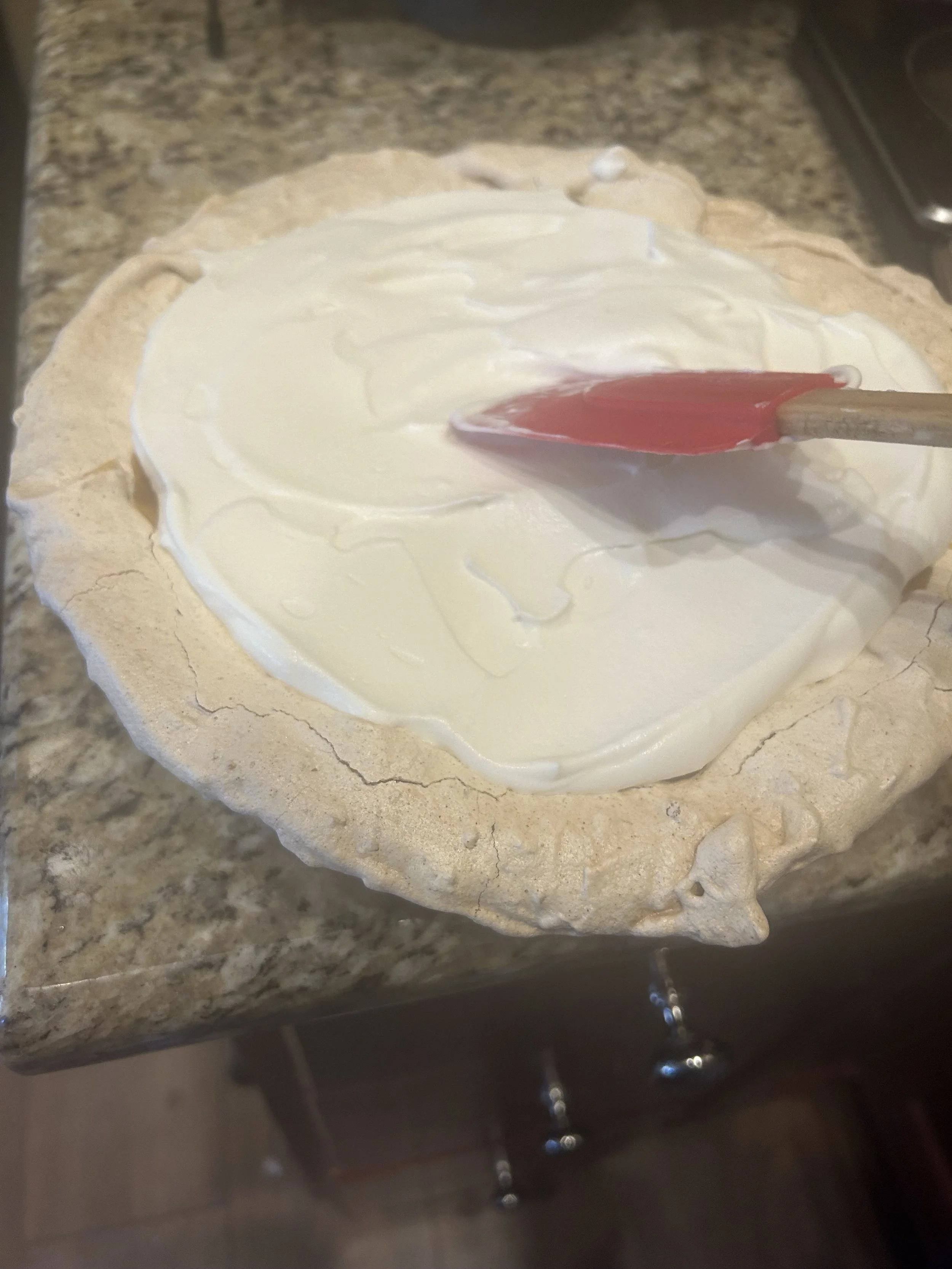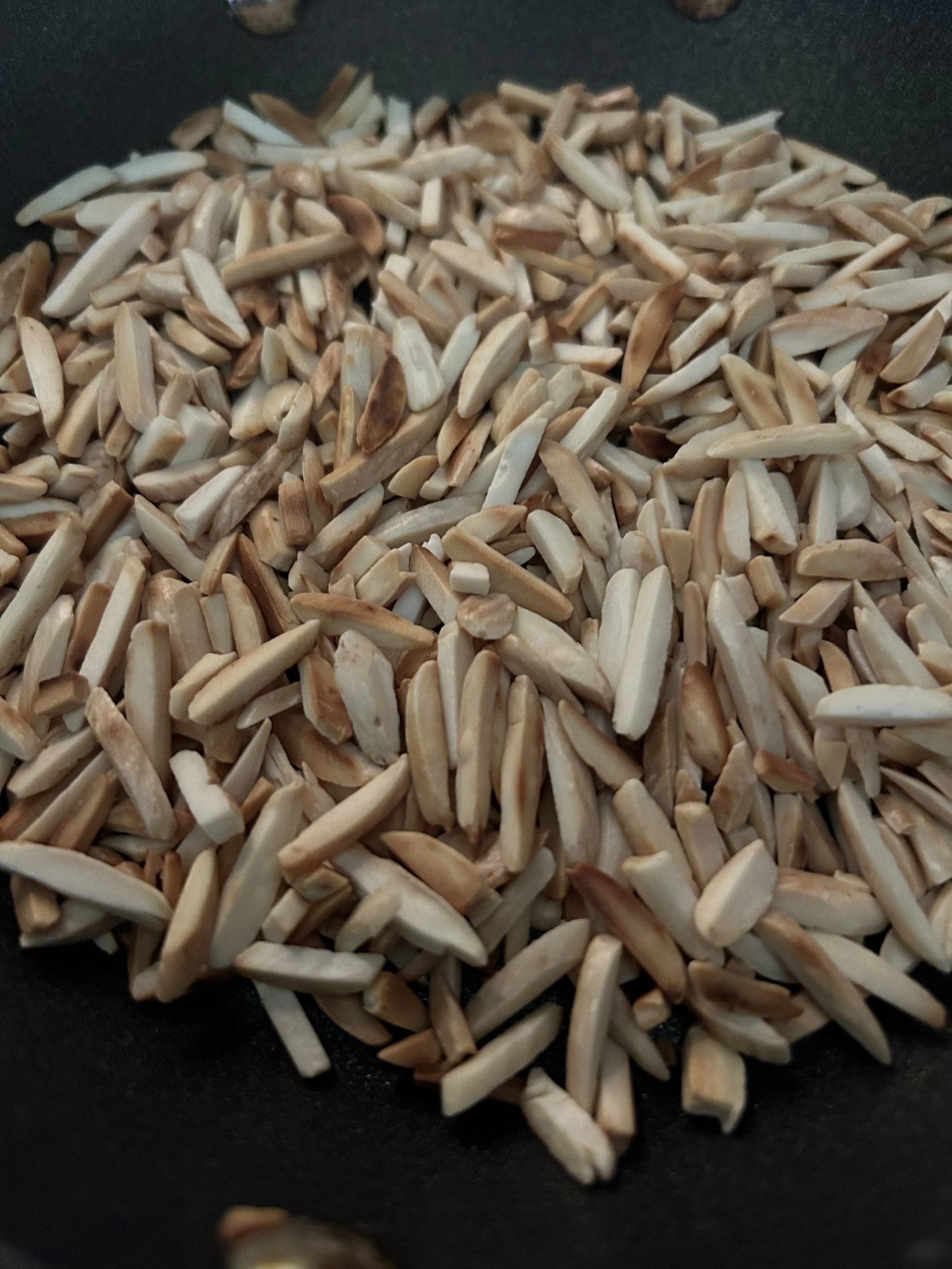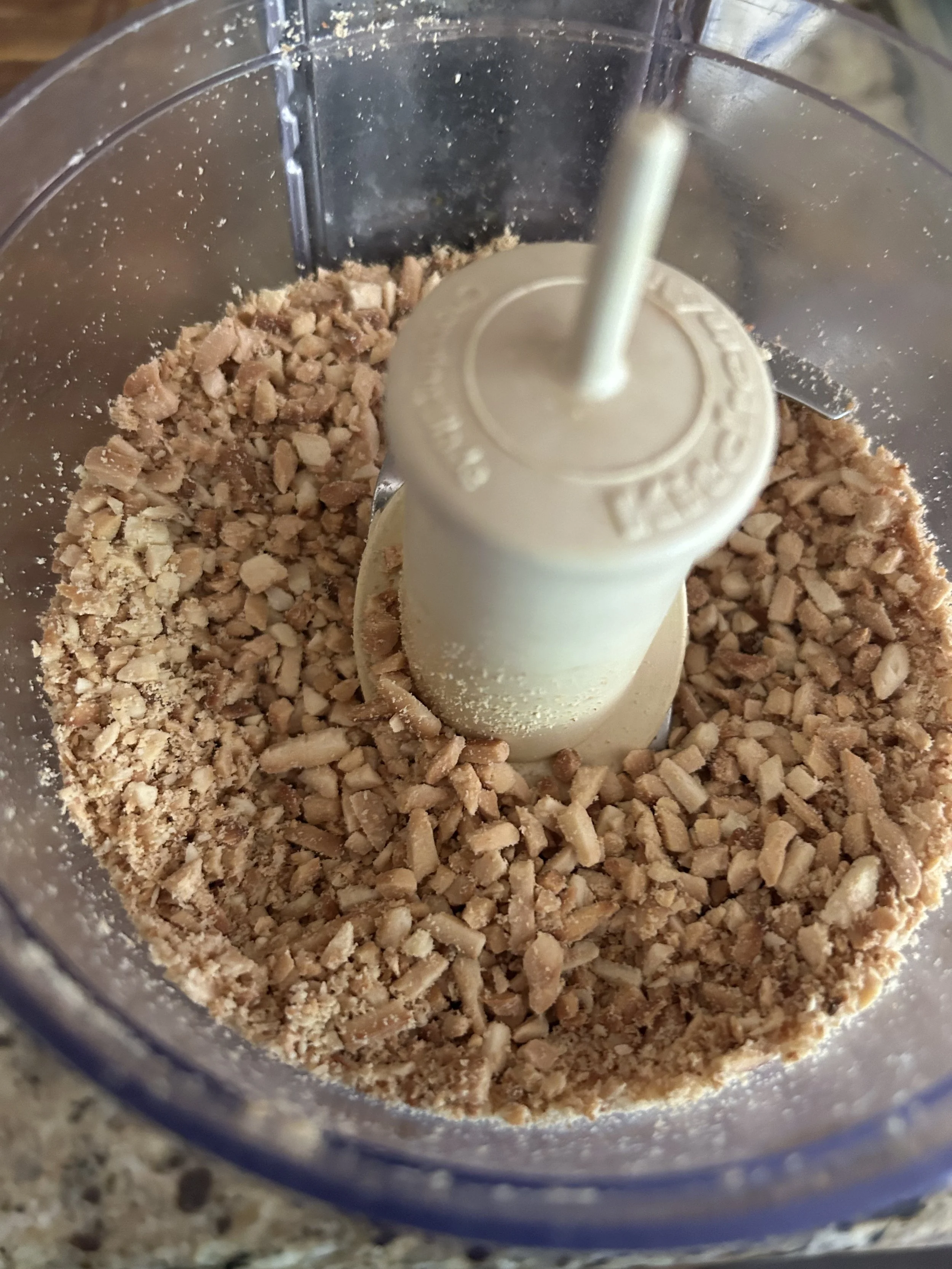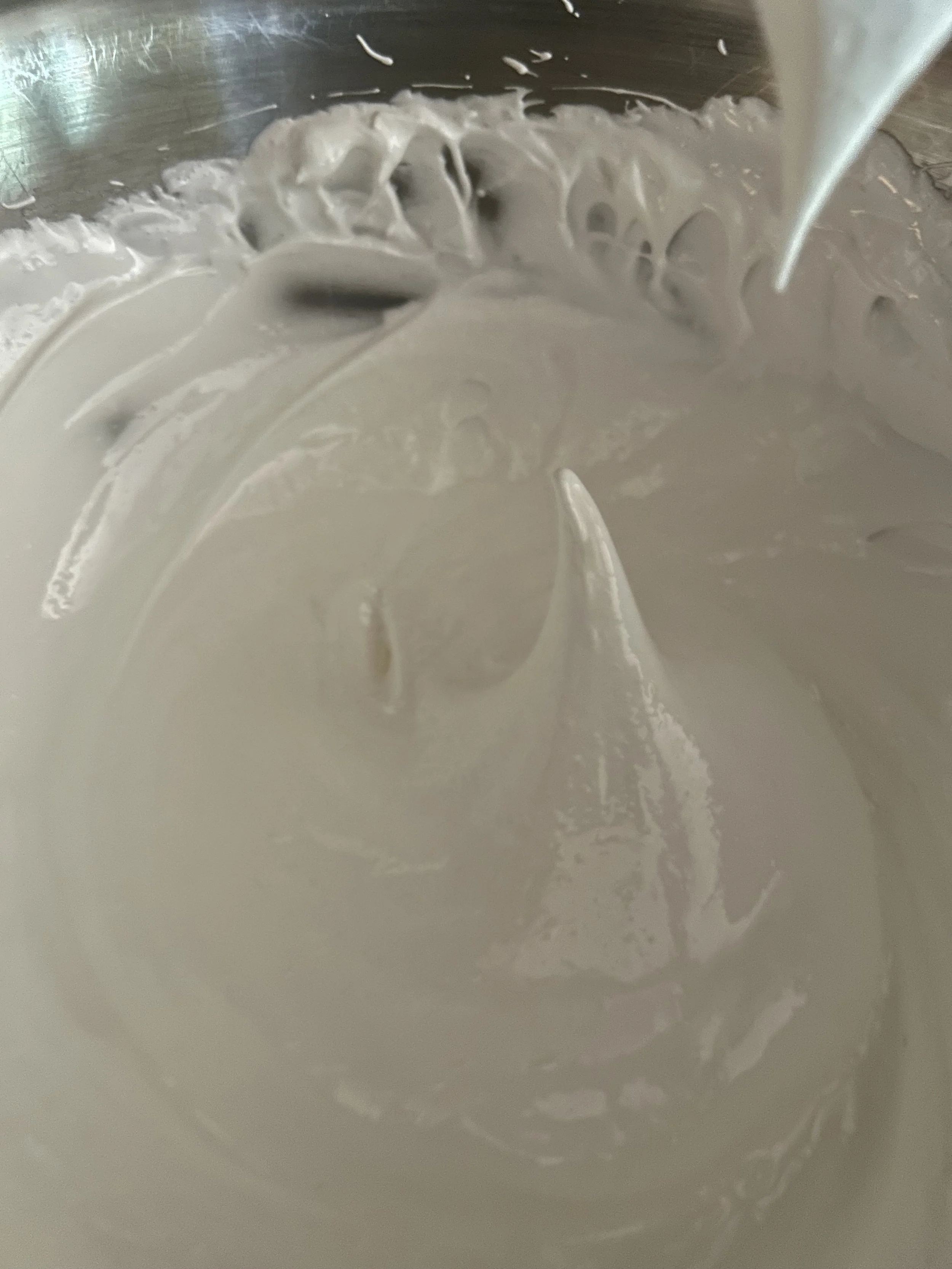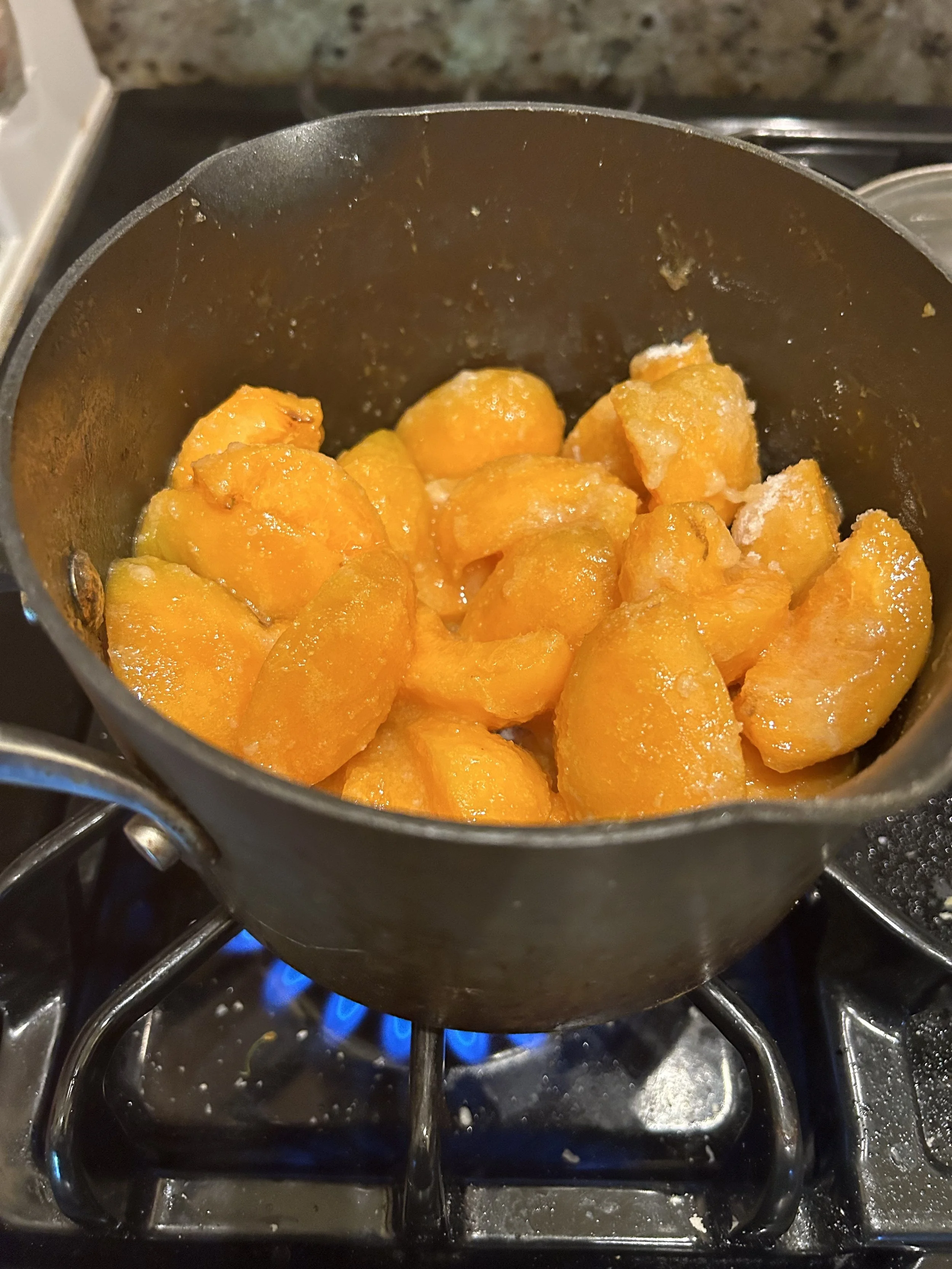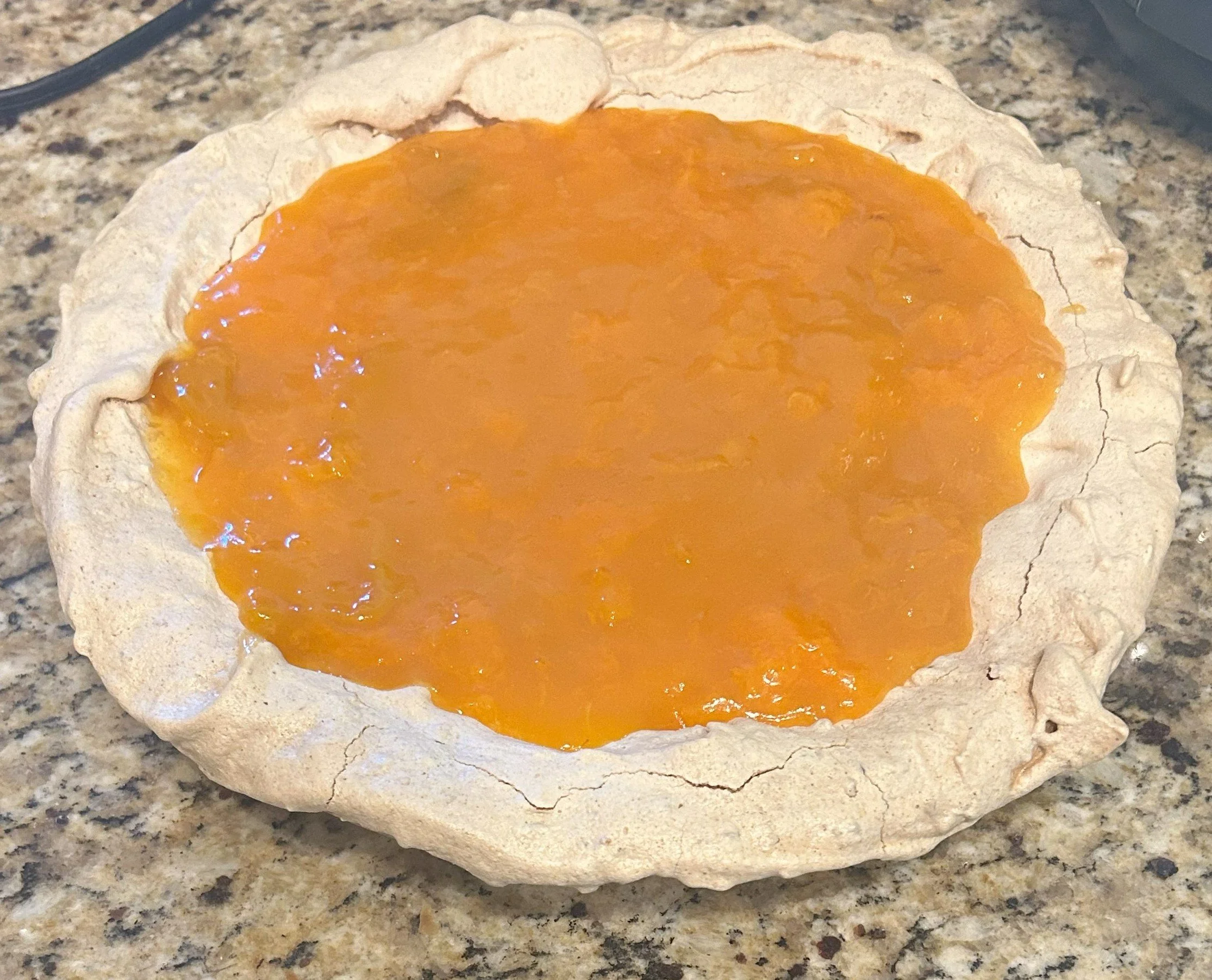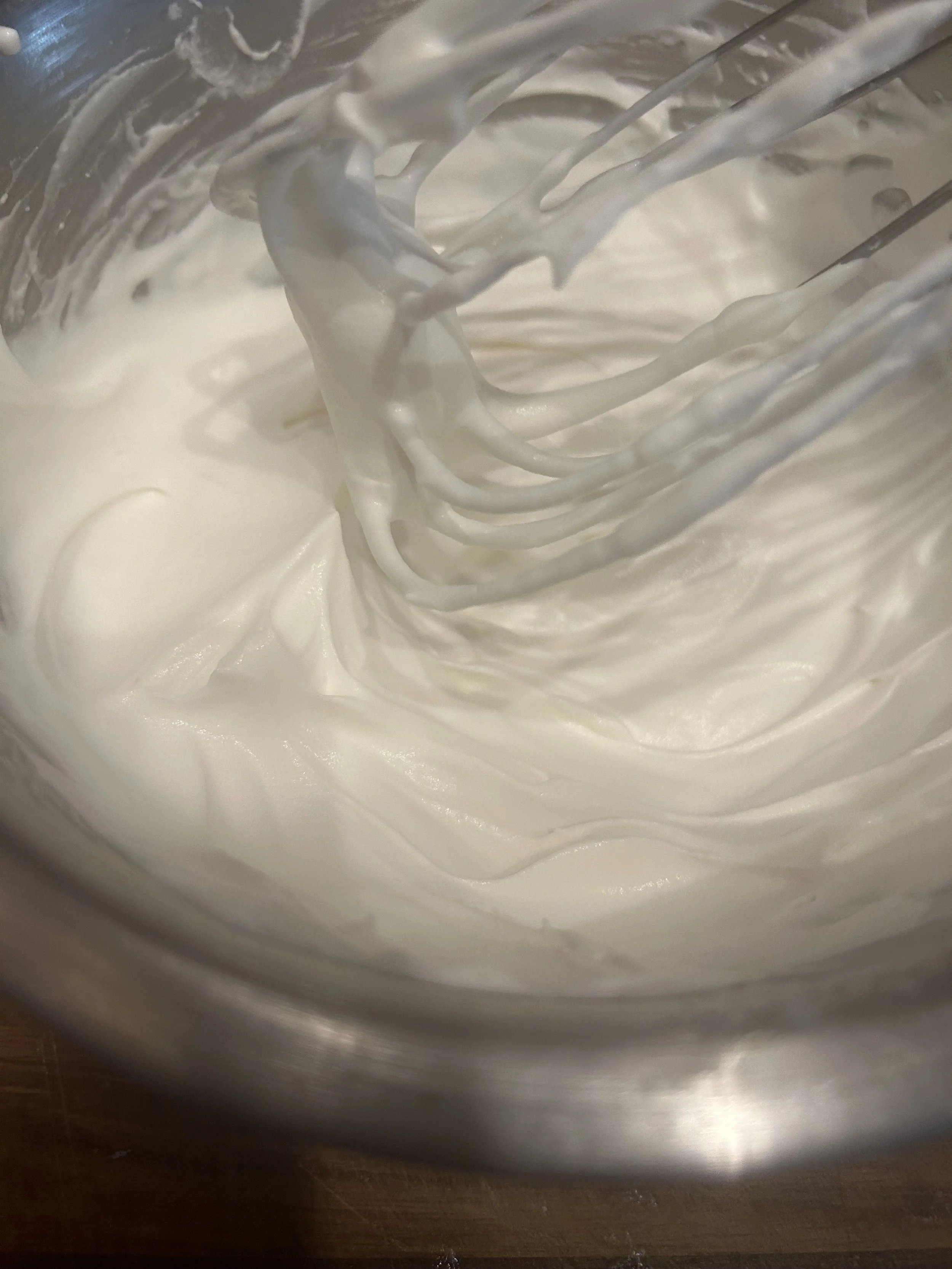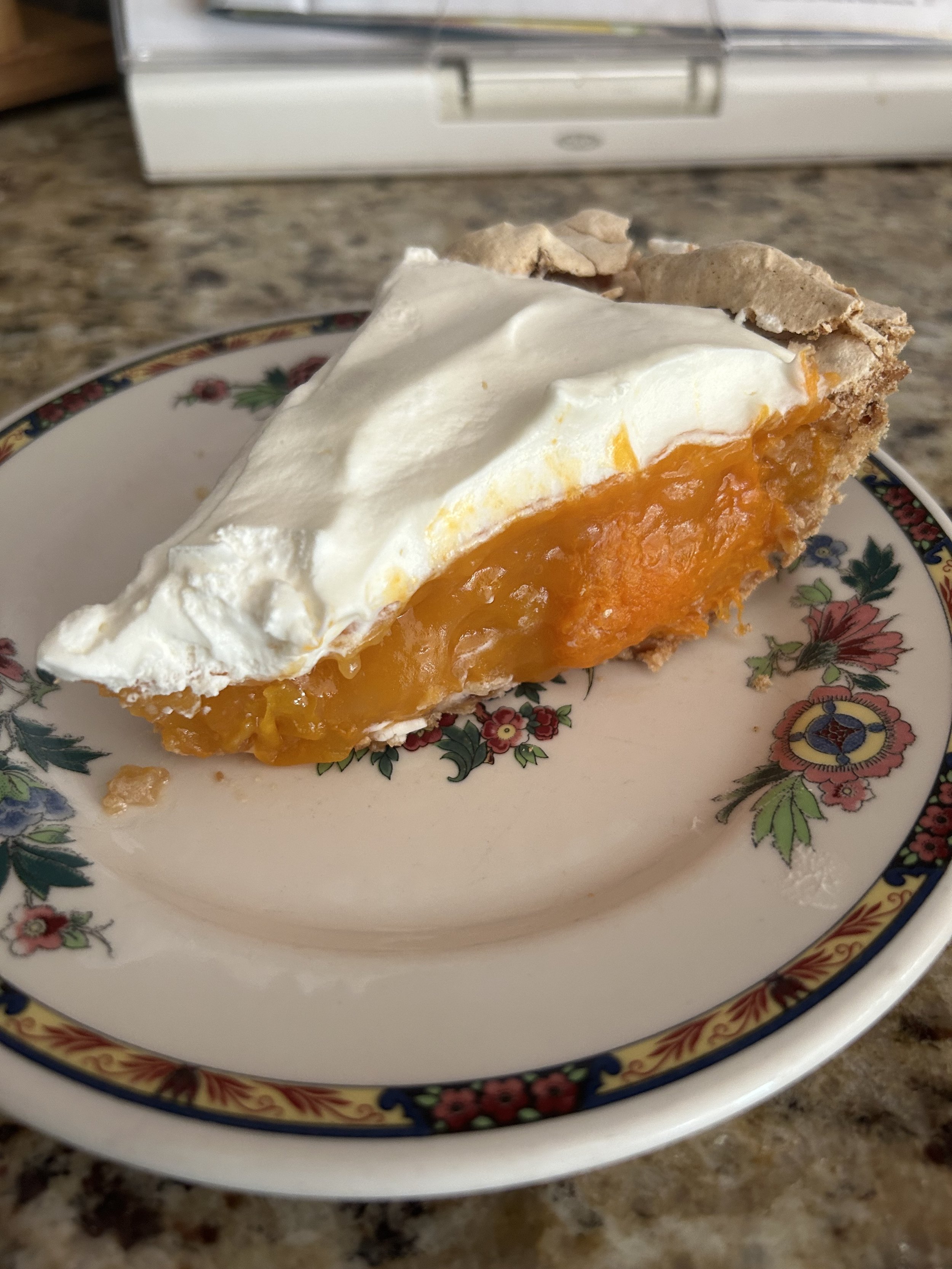Apricot pie with Meringue Crust
One thing that I love about the summertime is the gorgeously ripe stone fruit that the season has to offer.
Stone fruit describes soft fruit that has a large pit or stone in the middle, so think about peaches, plums, nectarines, cherries, avocados, and the star of today’s recipe, apricots.
Apricots have a wonderful firm flesh with a sweet-tart flavor and are fantastic for baking, so I have decided to turn them into a pie with a firm meringue crust and a tangy whipped topping.
I’ve had meringue pies before like lemon meringue pie, but with those kinds of pies, the meringue is often placed on top of the filling before being lightly baked. In this case, the meringue is going underneath the filling and will be acting as a crust.
I have never done a meringue pie crust before, but I am always open to trying new things. Plus, I do believe this makes this pie gluten-free, which is nice.
I will also be folding some ground, toasted almonds into the crust for a bit of texture and added flavor, which will also make the crust more like a daquoise, a nut meringue dessert that’s layered with coffee buttercream and chocolate ganache.
Let’s get into this!
Apricot pie with Almond Meringue Crust
Serves: 8 to 10
Time: 2 1/2 hours, plus chilling
For the crust:
Cooking spray
3/4 cup of unsalted almonds
3 egg whites*
1/4 teaspoon of cream of tartar
3/4 cup of sugar (Superfine sugar is ideal, but regular sugar works too)
1/2 teaspoon of baking powder
1/4 teaspoon of almond extract
For the filling and topping:
1/4-ounce packet of unflavored powdered gelatin (3/4 teaspoon)
1/4 cup plus 1 tablespoon of water
1 1/2 pounds of ripe apricots (about 11), pitted and cut into 1/2 to 3/4 inch pieces
2/3 cup plus 1 tablespoon of sugar
A pinch of salt
1/4 cup of cornstarch
3/4 cup of cold heavy cream
2 tablespoons of sour cream
1/2 teaspoon of vanilla extract
*Egg whites are going to whip up fluffier and faster when they’re at room temperature, but if you forget to take them out of the fridge or are short on time, then you can submerge the eggs in a small bowl of warm water for about 5 minutes.
Step 1: Make the crust
Preheat the oven to 325 degrees and grease a 9-inch pie pan with cooking spray.
Toast the almonds in a dry pan over medium-low heat, shaking now and then, until you can hear the nuts popping and they look golden and toasty.
Dump the toasted almonds into a food processor, then pulse 8-10 times, or until the nuts are ground but still have a few chunks left. Set aside.
Dump the egg whites and cream of tartar into a large bowl, or the bowl of a stand mixer with a whisk attachment, then use an electric whisk to start whipping the whites.
When doing this, you want to start at a slow speed and then gradually increase the speed as the whites start to look frothy. If you go too fast, then you’ll end up with bits of egg white all over your kitchen.
Once the whites look foamy and white, gradually add the sugar, a tablespoon at a time, until all of the sugar is added and dissolved into the whites, then increase the mixer speed to medium-high and whip for another 5-7 minutes, or until the whites reach a stiff peaks stage.
Beat the baking powder and almond extract into the meringue until combined, then gently fold in the ground almonds with a spatula until combined.
Evenly spread the meringue across the bottom and up the sides of the pan, making sure the edges of the pan are coated as well to create a meringue shell inside the pan.
Bake the crust for 45 minutes, or until the meringue is dry and crisp, then turn off the oven, open the door slightly, and let the meringue shell sit in the oven until mostly cooled 45 to 60 minutes. Transfer to a wire rack to cool completely.
The crust might look a bit cracked on the bottom, but no need to worry. The filling will cover that up.
Step 2: Make the filling
While the crust is cooling, dissolve the gelatin in 1 tablespoon of water in a small bowl, then set aside to bloom. This is a crucial step when working with gelatin, as it will not set otherwise.
Place the apricots into a medium saucepan with 2/3 cup of sugar and the salt. Bring to a simmer over medium heat, then cook for about 8-10 minutes, or until the mixture looks jammy.
Dissolve the cornstarch in 1/4 cup of water, then add that to the apricot mixture and cook, stirring, for another minute or until the jam thickens even more, then add the bloomed gelatin and cook for another minute, or until the gelatin is dissolved.
Remove from the heat and let it cool for about 10 minutes, stirring occasionally.
Step 3: Fill the crust
Pour the apricot filling into the meringue crust and spread to create an even layer. Refrigerate for 2-3 hours, or until set. You can also chill the pie overnight, then make the topping when you’re closer to serving.
Step 4: Make the topping
In a medium bowl, whip the heavy cream, sour cream, remaining 1 tablespoon of sugar and the vanilla with a whisk or electric whisk until stiff, glossy peaks form.
Spread over the filling, then chill for at least 20 minutes before serving.
I have to say, that the flavor and texture of this pie are on point! That meringue crust is firm enough to lift the filling away from the pan and also has a nice nuttiness that pairs wonderfully with the apricots.
It is a pie that I will definitely need to make next year during the apricot season.


